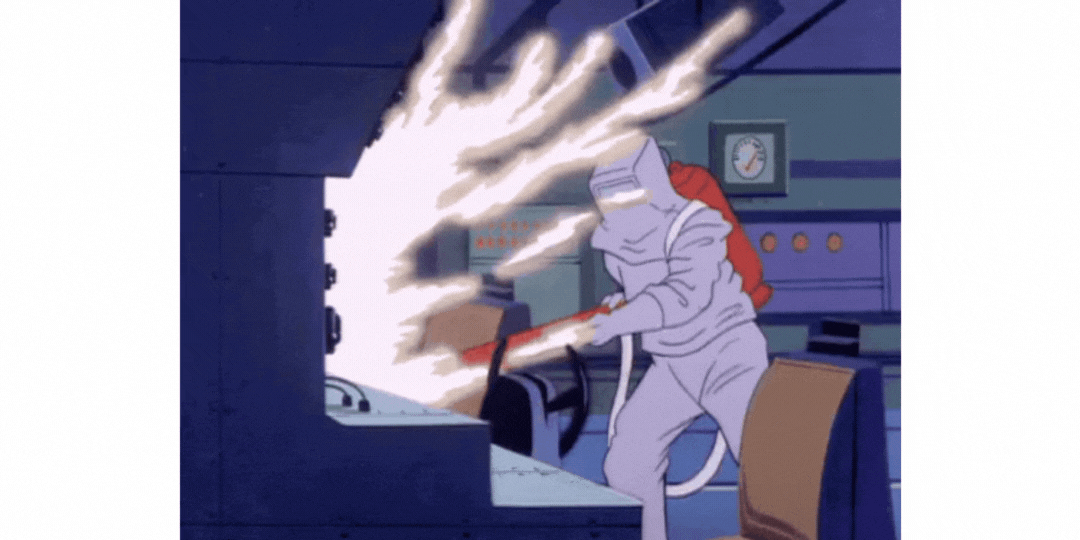We all lose focus from time to time. As retrospectives get repeated and stale, people start to hit auto-pilot and get side-tracked or distracted in the retrospective. They start getting vague with their responses, put on their grumpy pants, or simply disengage altogether due to boredom.
That’s why we have pulled together this list of nine of the best agile retrospective ideas and games to help keep your team engaged. These can help to support team connectedness, safety and fun. They bring focus to the room without singling anyone out. They can even help bring some fun to your meeting!
1. Energy Levels
Before the team jumps into the retrospective, ask everyone to call out, type or use their hands to indicate their current energy level. You can quickly see how the team feels and what energy is being brought into the retrospective.
5 means you are fully charged and ready to go. 1 means you are here but drained and running flat.

This game is a perfect warm up for the Energy Levels retrospective idea which helps people share what charged them up, and what drained them from the last sprint.

This game can highlight what is motivating your team. Their responses give you insight into things that give them energy so that you can aim to replicate this going forward. Likewise knowing what they need to re-charge can set the next sprint off in the right direction.
2. Statement Orbit
Statement Orbit is a fun retrospective game that can get an agile team moving…literally! This can be used interactive for both online and in person meetings.
An object is placed in the middle of the room with the team members standing around it. If you are online, the camera can act as the object.

Statements are read aloud, with team members invited to move towards the object if they agree with it and away from the object if they disagree. The size of the step they take should reflect the degree to which they agree or disagree.
Here are some examples or you can have people go round and call out their own statement.
- The last sprint went off without a hitch.
- Everyone was able to complete their tasks to the right quality and at the right time.
- We were able to demonstrate improved velocity.
- There were no errors, rework or impediments.
- We worked well as a team and created value.
- We acted according to our Scrum Values.
- We are working and acting according to our team agreements
As people move back and forth, this lets you see where people are far apart. This can be followed up with a discussion.
Then, you can align this with a retrospective theme. For example, you can build team cohesion and battle epics with the Superhero retrospective. If values and team agreements are not being experienced, then the Scrum Values retrospective may well be the way to go.
3. Sailboat retrospective
If your last sprint left the team feeling all at sea and hoping for some plain sailing with their next one, then get onboard with this fun retro idea. The Sailboat retrospective is designed to help your crew reflect on their last sprint, and plot a successful course going forward. This can help them remember the vision and plan ahead based on what they have already learned and to develop a more positive mindset.

Like all good sailors, they need to consider their conditions. The wind (what moves them forward), rocks (the risks they may face), the sun (what makes them feel good), anchors (what can slow things down or stop them completely) and, of course, where they are heading.
This retrospective idea can be useful when your team is having trouble seeing the big picture or are kick starting off a new epic or project. It helps them focus on their goal and plot a course to achieve it!
4. Starfish retrospective
If you are finding your retros a bit of a talk fest, with no action or commitment, then this action oriented format might be the way to go.
The Starfish retrospective idea helps teams to think about the degree to which actions and activities are most effective in creating value and team cohesion.
It’s different from more traditional retro ideas because rather than just listing down what happened in the last sprint, the team is encouraged to be more specific and think about practices that are generating value. It can also help the team members gain insight into each other’s perception of those practices.

As well as thinking about what they should start and stop doing, the team thinks about what they could do more and less of. They also define what they should keep doing. This way, the Starfish retrospective idea can help a team decide which of their practices should have more or less energy directed towards them. It can be a great way of helping a team step away from unhelpful practices without them feeling like they are going cold turkey.
It’s best to run a Starfish after a few retrospectives have happened. This way the team has a period of activity to look back on and compare.
5. ESVP
How do you ask people how they are feeling without asking people how they are feeling?
You run an ESVP.
The ESVP is designed to engage and focus on those involved in the retro. At the same time, it gains insight into the participants’ attitudes towards the agile retrospective meeting itself.

ESVP stands for ‘Explorers, Shoppers, Vacationers and Prisoners’. Participants indicate which of four personas they most relate at that point in time. They are invited to choose from –
An explorer – Will dive in and discover new things
A shopper – Will see what can be procured
A vacationer – Will relax and switch off
A prisoner – Does not want to be there
Setting the stage with an ESVP can help a Scrum Master gauge the attitudes of the people in the room. This lets them shape their next steps and helps everyone make the most of their meeting time.
An ESVP can give everyone insight into the current motivations of the group. This means you’ll get more out of your meeting because you can see the attitudes and expectations of the people there and adjust your approach.
6. Rose Bud Thorn
Roses aren’t just for Valentine’s Day or special occasions. The sweet scent of the rose can sometimes mask the thorns that serve to protect them.
The Rose, Bud, Thorn retrospective idea plays on this metaphor. It helps a team identify the positive outcomes (Rose), the opportunities (Bud), and the pains (Thorn) from their last sprint.
This game reminds your team to approach challenges as manageable obstacles that come along with delivery value. Getting past the thorns, nurturing buds and then harvesting the blooms is the goal of this game.

7. The Retro Anti-Pattern Bingo
This game has the team being made aware of things that can negatively impact a retro and to be on the active look out for them during a retro. Inspired by Ben Linders, this game could be just the thing to help address issues without making people feel singled out.
Each team member is given a bingo board that includes retro anti-patterns. This includes things like distractions, jumping to solutions, blaming the process, lack of action items. The center square is a wild card, or you can add your own anti-pattern.
As the team goes through the retro, they can mark off things they noticed on their board. At the end of the retro, people can see if they scored 5 in a row. You could have people shout out “Bingo!” during the game but this could also serve as a distraction.
This retrospective game is great for helping teams reset their behaviors, or simply introduce good meeting etiquette. It can also be a fun way to teach new teams what habits they should avoid.

8. Sherlock retrospective
If you have a team of mystery buffs, try the Sherlock retrospective idea for your next meeting. It’s especially helpful if the team needs to unravel the cause of a particularly puzzling sprint. Engaging a team might not always be about fun. It could be the problem solving, logical aspects and feeling the sense of achievement when solving a tough problem.

The team looks at their last sprint like a mystery. They list what cases were closed, and the clues that helped them. They define what they found to be elementary, as well as what puzzles remain.
This way, like Sherlock, team members are encouraged to put emotion aside and just look at the facts. This easy retro can be a helpful way of encouraging teams to unpack tricky problems with calm and logic as they generate ideas.
9. GIF Me a Break!
This retrospective game is simple, fast and fun. It works especially well with remote online agile teams.
Just before the team jumps into the retro itself, each person is asked to find and share a GIF that represents the last sprint. The GIF they share could be quite topical, use a classic such https://giphy.com/. Each person picks a gif and then shares their screens to explain why they picked that gif.
GIF Me a Break is a fun way a Scrum Master can gain insight into what the team thought of the last sprint without having to ask them directly. It’s also a way of objecting some fun into the meeting following a particularly challenging sprint.
Bonus tips for running great retrospective ideas and games
-
Keep them inclusive
When choosing a retrospective idea make sure it’s one the whole team can enjoy. Keep language, accessibility and peoples backgrounds in mind. The simplest way of doing this might be to ask them which one they’d like to try.
-
Book end the retro with fun
Using games is a great way to build team connectedness. Making sure they are limited to the start and end of the retro is a great way to make sure they don’t become distracting and that your retrospective is still meaningful and worthwhile.
-
Timebox
Whether it be a great retrospective idea or fantastic game, timeboxing the game is an important principle in agile that can also be practiced while still making the retro valuable andt fun.
-
Keep it relevant
Picking a theme, topic or issue that is relevant to your team is what keeps them engaged. Don’t simply rely on a theme. At the end of the day, making sure that people are able to relate to the discussion is what will drive engagement.
Want more?
Check out our Scrum Master’s Retrospective Guide where we look at what agile games teams play to help them learn and grow. You can also head to our blog for some fun and easy retrospective ideas.
TeamRetro lets you create engaging and effective Agile Retrospectives. Create and customize your own templates, explore team happiness and create actions for continuous improvement.




